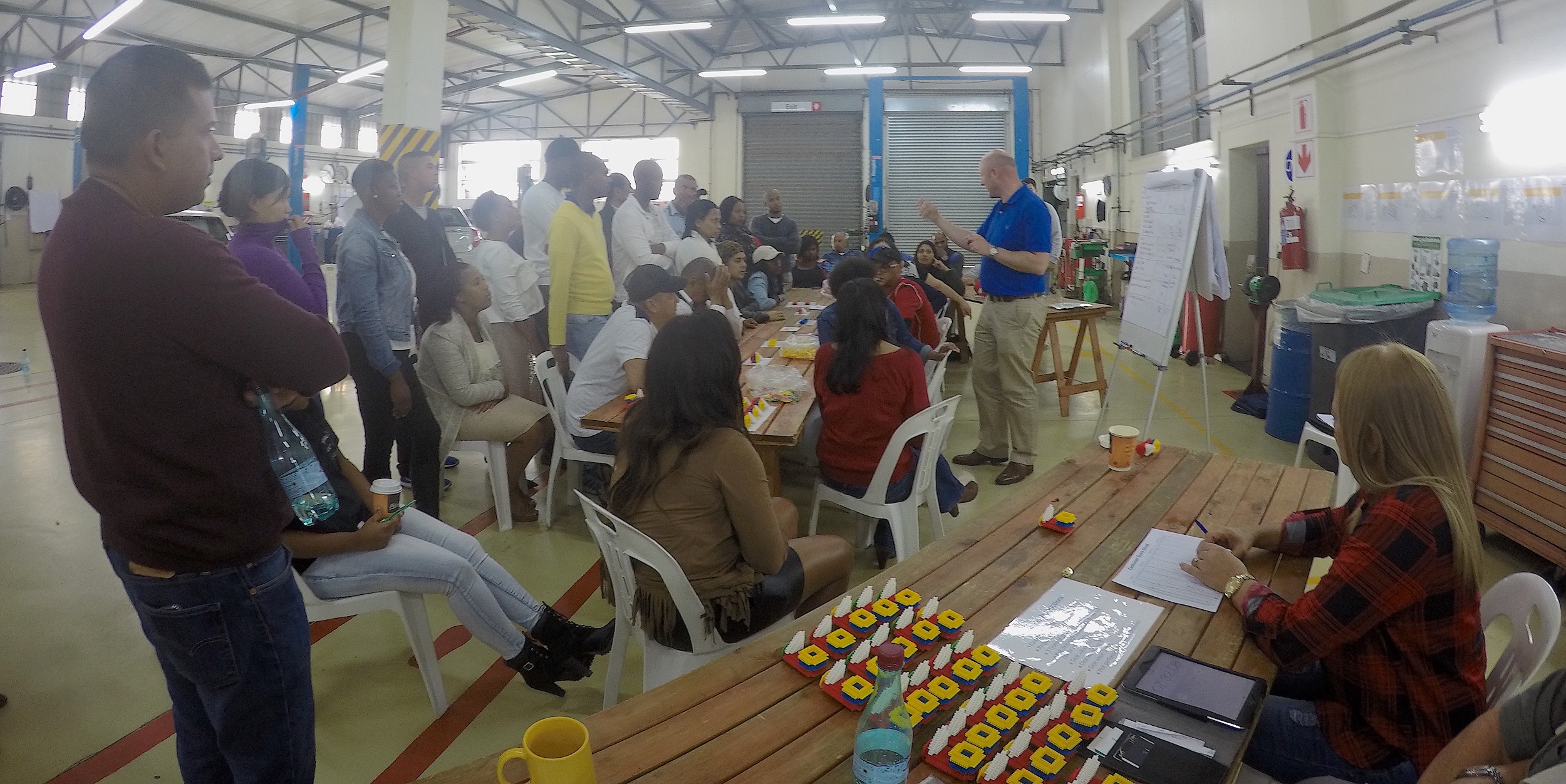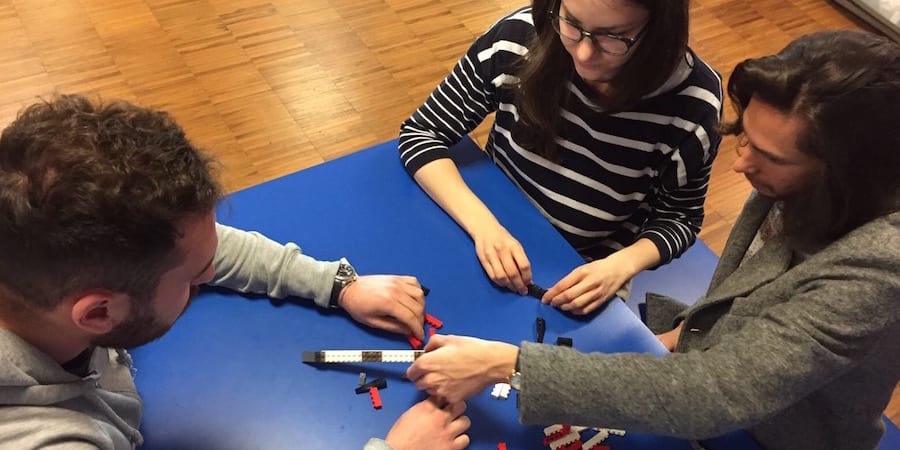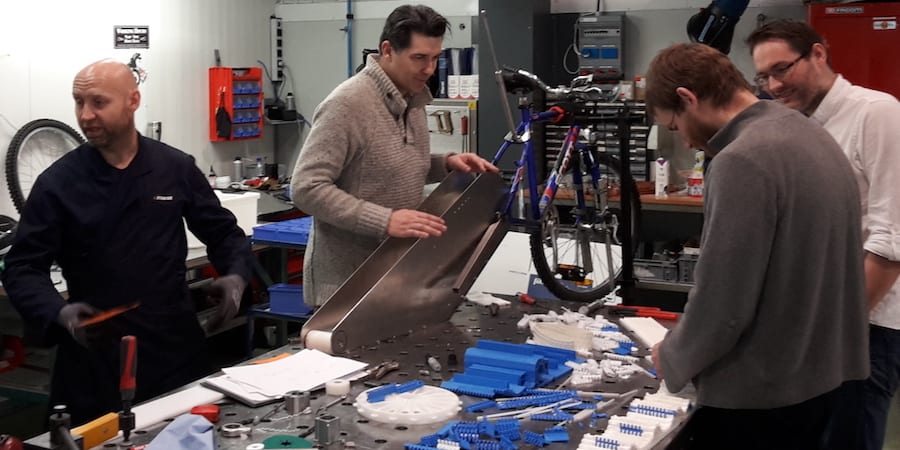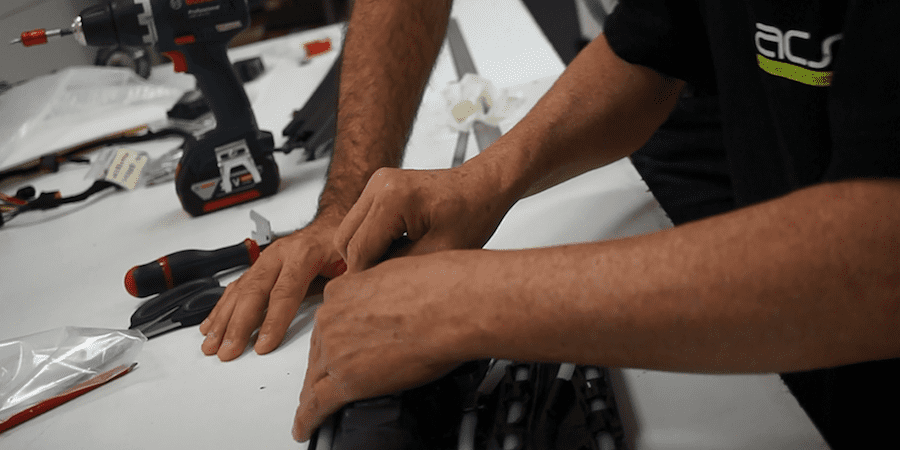
Start with product takt-time
FEATURE – By adopting a product takt time perspective, we can better align engineering decisions with market demands, leading to better design, manufacturing, and material choices.
Words: Michael Ballé, Eivind Reke, and Yu-Hsiu Josh Hung
Lean Product and Process Development (LPPD) is arguably the most impactful aspect of Lean Thinking. After all, product development is where customer value is created: why should customers choose your product over your competitors or over other ways of achieving the same results? How can you offer superior design, better customization as well as quick delivery, service and maintainability? All this at an affordable price? These outcomes are the result of thousands of engineering decisions, both at the product feature level and in making the right manufacturing and material choices.
- Feature choices that deliver real value to customer, which depends on the engineers’ good judgement to distinguish what customers say they want, influenced by current market trends, and what they really purchase. These are very hard judgement calls that require constant questioning, returning to the customer gemba time and again, and developing a deep understanding of what each brand really stands for.
- Manufacturing choices that determine the quality, cost, and availability of products, and that also require much soul searching: should we go with existing, proven methods to keep costs down and share assets with other products in the line-up range? Or should we invest on newer manufacturing methods with less of a track record and requiring more investment but that might represent the future of the company’s manufacturing base?
- Material choices that determine the value network, production methods, and footprint of the product. Should we go with tried and tested materials that we know deliver the attributes we are looking for, but with low recycling abilities, complex value networks and high environmental footprint? Or should we invest in new materials with higher investment cost in new value networks and production methods and a higher degree of uncertainty, which will enable easier re-cycling and re-use and offer an improved sustainability performance?
Product development is a flow of design information and engineering, manufacturing and material decisions. Making these decisions based on the design information available are all the harder because a sum of features do not make a product, just like a sum of manufacturing decisions in terms of Return on Investment on one project do not guarantee overall return on assets for the company. For instance, there are cases where the counterintuitive choice of abandoning large legacy factories for smaller, newer set-ups, as our lean friends in Ukraine are currently forced to do with the Russian invasion, improves your return on your asset base. The same goes for material performance: switching from plastic- to paper-based materials does not necessarily improve the footprint of the product.
Unfortunately, because CEOs see lean as a “production thing”, one of the many methods to improve operational efficiency rather than a full enterprise strategy (and because consultants tend to stick to what they know and sell manufacturing projects), most companies miss out on the deeper insight of LPPD: manufacturing is the test method for design decisions. The impact of each design decision will first appear in production and at suppliers (can we make this safely, at quality and cost?) and then on the market (will customers adopt the product?).
What’s worse is that, because of much of lean manufacturing originates from outside of Toyota (within Toyota, the emphasis has always been on designing and building ever-better cars, ever since its founding while tearing down and copying GM and Ford vehicles), LPPD tends to be interpreted as applying lean manufacturing techniques to remove waste in engineering processes – which clearly makes little sense. Accelerating project lead-times will not deliver better product by itself; on the contrary, it risks forcing engineers to make premature decisions that will affect the market performance of products. As engineers learn to make better judgement calls, development lead-times will come down with less redo and rework, but you can’t get a car to go faster by moving the speedometer needle on the dashboard. The aim of any LPPD activity should be to create the conditions for better engineering choices, in order to make products more appealing to customers.
In engineering, the two tricky questions are: are we doing things right? (Following design guidelines, modelling the right calculations, checking on the impact of decision, etc.) And, are we doing the right things? These are hard questions to answer.

Without a crystal ball, how can we know if we are doing the right things and doing things right? Creating a vision for future products is critical in product development as it fundamentally challenges the existing products. Therefore, choosing the right design topics is hard: should we go all out on solid state batteries or work with existing batteries? Should we only focus on BEV (Battery Electric Vehicle) or continue to develop a full hybrid range? Are customers really buying electric vehicles at their real price, or are they unduly influenced in their choices by government incentives and communication? How can we know?
There is no knowing, but we can get better odds on our guesses by reducing the scope of our bets. We can start LPPD reasoning by looking at our full product range, assuming that each product offer fits a market niche, and then ask ourselves: what is the product takt time?
Rather than choose to revamp a product when sales have catastrophically dropped, we can instil a discipline of reviewing each product every six months, two years, four years, to decide what we should change and what we should keep. What are the long-term investments in new assets (technology, materials, etc.) the company is committing to, and when are we ready to make the shift?
Thinking this way, a lean Chief Engineer starts with clear sales and profitability targets for a product renewal and answers deep questions about what customers are now looking for and what they still value and purchase without mentioning it (things like quality, safety, and durability are obvious to them). Thinking in terms of product takt time radically changes engineering outlook, because it encourages you to look at a full flow of value, not a single product release. This will have immense consequences on the manufacturing cost as we can better chose what new processes need to be installed and what existing ones can be leveraged.
A product takt time is also the key to better leveraging marketing and model identity as marketers can answer with greater confidence the question of “what does this product need in order to appeal to customers today?” rather than “what would the perfect product for this niche be tomorrow?” Product takt time helps to calibrate all marketing and engineering questions and avoid lethal flights of fancy of impossible requirements and blue-sky thinking around features customers will never actually purchase once they’re told how much they cost.
Clearly, there is much, much more to LPPD than product takt time. Years ago, we tried to capture the full lean product and process development system with Freddy Ballé:

But it is also easy to get lost in a ticking-the-box exercise and miss the overall point. By starting with the line-up and product release takt time, you orient your engineers’ minds the right way and start thinking differently about how to distribute and develop your engineering resources (for instance have you got the right people to develop the next generation of products?).
There are, of course, different types of takt-times. As we've suggested, looking at regular product upgrades is a great place to start, but it’s by no means a great place to stop. As we accumulate new knowledge from these engineering activities, we should leverage this knowledge to think ahead. What markets or segments are we not competing in? What will the next generation of customers value that is different to today’s customers? How do we keep with the spirit of the times with our product portfolio? And what regulations will we face in the future and how do we form new solutions in response to them?
To handle these long-term challenges, we can also think in terms of takt-time. In fact, this is what Toyota does with its model renewals. It’s also how Apple systematically implements new and improved technology in their product portfolio. For instance, Toyota has historically moved in different cycles in terms of product takt, linked with the training of new chief engineers. The regular upgrades happen yearly and are led by aspiring CEs at “junior level”. Mid-level CEs handle the generational modal changes that usually happen every three to four years – product releases that usually entail larger changes in technology and value offerings to existing models. Finally, senior CEs are in charge of developing completely new models that are often addressing new markets and new technology at the same time. Famous examples are Hasegawa and the first Corolla, Uchiyamada and the first Prius, Suzuki and the first Lexus. There are, however, other examples of Toyota developing new market niches with product launches: for example, the first model in the luxury cross-over segment was the Lexus RX-series, first developed by chief engineer Tsuneo Uchimoto. These types of releases usually happen in roughly eight-to-ten-year intervals and require far more investment in all aspects of design and product development. Apple, on the other hand, holds a smaller product portfolio that is kept up to date relentlessly on yearly or two-yearly cycles. Sometimes, only small design changes are implemented, because new technologies aren’t implemented until they are fully ready (see the case of portrait mode in this HBR article), while other times large upgrades are made in fundamental design or technology.
One of the biggest reasons these types of high-risk development projects fail (and both Apple and Toyota have had their share of failures), though, is arguably the lack of accumulated knowledge in the engineering organization, both technical, market and customer preference knowledge. Knowledge that can only be developed gradually, while testing hypothesis at the gemba, the real and messy world of customers and manufacturing. So, start with product takt-time and ask yourself what the natural cycles (short, medium, long term) of your markets and customers are and how you can align the engineering organization to these cycles. As we discussed in this article, the answer will be takt-time.
THE AUTHORS



Read more


FEATURE – When it comes to the fight against climate change, we can’t expect to achieve much until we fundamentally challenge the way we think about resource consumption. Lean is our tool to do that.


FEATURE – Having dedicated clinical paths for specific types of patients is a well-known method for reducing waiting times. By doing it, Siena University Hospital managed to slash delays by 80%.


FEATURE – For this new monthly article, we will be asking five lean practitioners the same question and share their answers with you. We started by asking them about their biggest lean mistake.


INTERVIEW – The Lean Enterprise Academy just launched the Lean Learning Journey, an online platform from which practitioners can pull the practical knowledge they need in their lean transformation.
Read more



INTERVIEW – Convinced that a product that is correctly engineered is easy to manufacture, this product development unit relies on lean thinking to ensure its remotely operated vehicles perform at their best.



FEATURE – In a world of disruptive innovation, being faster and smarter at developing new products has become critical. The authors explain why set-based concurrent engineering is the answer, and why a game is the best way to learn it.


FEATURE – As an experiment to boost cross-functional collaboration, creativity and joy on the workplace, Iceland-based machining manufacturer Marel recently ran a hackathon. Here's what the experience taught them.


FEATURE – A French automotive supplier has been applying lean principles to transform its engineering department with great results. In the process, they have realized they could put in place a really effective system to build innovation.

